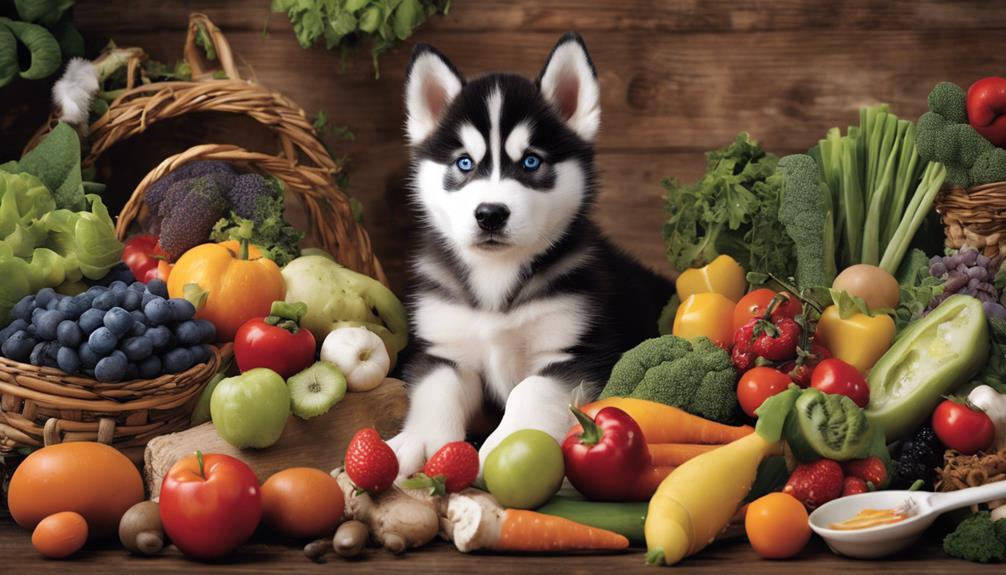Golden retrievers communicate with subtle cues beyond barking. They wag their tails to show happiness or excitement, tilt their heads out of curiosity, and lean into you for reassurance. Soft whining or gentle nudges express needs or affection, while a stiff stance or pinned ears signals discomfort. Pay attention to their facial expressions and body language—these are key signals of their feelings. If you want to discover more surprising ways your dog tries to talk, keep exploring these signs.
Key Takeaways
- Your dog may tilt its head to show curiosity or seek clarification on your actions.
- Wagging tail positions can indicate excitement, happiness, or a desire for attention.
- Soft blinking and relaxed eyes signal contentment and comfort around you.
- Pawing or leaning into you are ways your dog seeks reassurance or affection.
- Whining or gentle vocalizations often express needs, excitement, or emotional states.

Golden Retrievers are famously friendly and expressive, but many owners are surprised to discover just how they communicate beyond simple barking or wagging tails. Your dog’s way of talking isn’t limited to these common signals; instead, they utilize a complex system of dog language that forms part of their broader canine communication. Recognizing these subtle cues can deepen your bond and help you understand what your furry friend is truly trying to say.
Golden Retrievers communicate through a complex system of signals beyond barking and wagging tails.
One of the most common forms of canine communication is body language. When your Golden Retriever approaches you with a relaxed, loose stance, it often signals happiness and comfort. Conversely, if they stiffen, raise their hackles, or hold their tail high with a tense body, they might be feeling threatened or anxious. Pay close attention to their eyes and ears, too. Soft, blinking eyes and relaxed ears usually indicate contentment, while wide eyes, dilated pupils, or pinned-back ears suggest alertness or stress. These physical signals are your dog’s way of communicating their emotional state without uttering a single word.
Your dog’s facial expressions also play an essential role in their canine communication. A gentle, open-mouthed ‘smile’ can be a sign of friendliness, while a wrinkled nose or a furrowed brow may indicate discomfort or suspicion. Sometimes, they’ll tilt their head, which is often seen as curiosity, but it’s also a way for them to better interpret what you’re saying or doing. Recognizing these nuanced gestures helps you interpret their feelings and respond appropriately. Additionally, understanding eye contact, which can vary from direct and intense to avoidant, is crucial for interpreting their comfort level.
Beyond body language and facial cues, your Golden Retriever uses vocalizations as part of their dog language. Besides barking, they might whine, whimper, or even groan to express needs or emotions. A soft, pleading whimper might mean they want attention, while a loud bark could signal alertness or excitement. These sounds, combined with their physical cues, form a rich tapestry of canine communication that tells you what they’re experiencing in real-time.
Your dog also communicates through scent and touch, although these are less obvious. They might nudge or lean into you to show affection or seek reassurance, and they often use scent to mark their territory or identify others. By understanding these various forms of dog language, you can better respond to your Golden Retriever’s needs and feelings, creating a more harmonious relationship. Remember, every tail wag, ear tilt, or bark is a message—if you learn to read the signs of their canine communication, you’ll understand your best friend on a whole new level.
Frequently Asked Questions
How Can I Tell if My Dog’S Noises Are Different Signals?
Imagine you’re in a vintage radio station, tuning into different signals. You can tell your dog’s vocalizations apart by paying attention to sound differentiation. For example, a bark might mean excitement, while a whimper signals discomfort. Notice subtle changes in pitch, duration, or intensity. Over time, you’ll start recognizing these differences, making it easier to understand what your furry friend is trying to communicate through their unique sounds.
Do Golden Retrievers Have Unique Ways of Communicating With Their Owners?
Yes, golden retrievers have unique ways of communicating with you. You’ll notice their dog vocalizations vary, like playful barks or whines, signaling different feelings. Tail wagging is another key cue, showing excitement or friendliness. Pay attention to these signals, as they help you understand your retriever’s mood. Over time, you’ll learn to interpret their vocalizations and tail movements, strengthening your bond and making communication more natural.
Can My Dog Understand Human Emotions Through Their Gestures?
Imagine your dog’s eyes as a window to their soul, revealing more than words ever could. Your dog’s vocalizations and body language show remarkable emotional intelligence, allowing them to sense your feelings. They might nuzzle when you’re sad or wag excitedly when you’re happy. Yes, your dog can understand human emotions through gestures, turning silent signals into a shared language that deepens your bond every day.
What Are Some Signs My Dog Wants to Play or Get My Attention?
When your dog wants to play or get your attention, look for signs like dog vocal cues, such as barking or whining, and tail wagging. They might also nudge you with their nose or paw at you. These signals show they’re enthusiastic to engage. Pay attention to their body language, and you’ll quickly learn when they’re excited or need something, making playtime more fun for both of you.
How Does My Dog’S Body Language Change When They’Re Trying to Communicate?
Oh, your dog’s body language is secretly a masterclass in communication. When they’re enthusiastic to get your attention, you’ll notice tail wagging that’s practically a dance, and ear positioning that signals curiosity or excitement. A happy, engaged pup might lean forward or tilt their head, while a nervous one might tuck their ears back. Pay close attention—these subtle cues tell you exactly what they’re trying to say without barking a word.
Conclusion
So there you have it—your golden retriever’s secret language, from soulful looks to playful nudges. Who knew that those adorable antics are actually a complex, undercover communication system? Next time they give you the puppy eyes or bring you their favorite toy, just remember: they’re not just being cute, they’re trying to tell you something. So, sit back, decode, and enjoy the hilarious, adorable chaos of your four-legged chatterbox.










